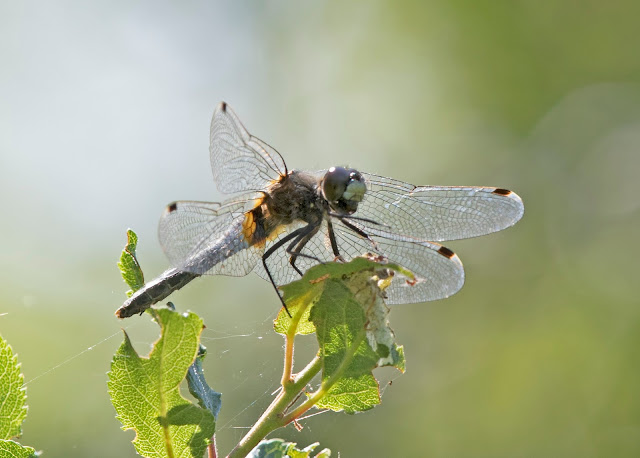What follows is my photographic diary - more of a chronological report - which seems easier than sorting out the species, it also highlights the variety, you never know what you will come across just round the next corner.
The journey out was a first for me, Eurostar to Lille and TGV to Poitiers where we were picked up by our guide for the final leg. Refreshing to travel by rail than the struggle of the airlines.
Day one dawned bright and sunny and we set off in eager anticipation.
Étang de la Sous
First up was a visit to Etang de la Sous, the flagship of the reserve and extremely popular - the car park was well occupied by the time we arrived. Also, French birding photographers have a knack of occupying a whole window of the hide and it was difficult to get a view of the lake. Mind you, by the end of the week I had perfected this technique.In front of the hide were Black-necked Grebes, Whiskered Terns, Red-crested Pochard and Little Grebes.
The breeding Whiskered Terns were some distance away, they build a nest on top of the Water Lily pads - a bit precarious but obviously successful.
Returning to the car park gave close views of a noisy Nightingale, the distant sound of a Turtle Dove and our first Dragonflies and Butterflies.
 |
| Broad-bodied Chaser |
 |
| Black-tailed Skimmer (f) |
An obliging Wall
A steady start but not the views that I was expecting. However, Jason, the tour leader promised us a return when things would not be so busy.
Terre de Renard
A leisurely walk alongside a pair of etangs demonstrated the range of wildlife.
 |
| Green-veined White - the only of the tour. |
A sociable European Wall Lizard...
...showing some nice blue spots on the belly.
Not much of a photograph I know, but a life tick for me. The Lilypad Whiteface or the Dainty White-faced Darter, Leuccorhinia caudalis.
 |
| Lilypad Whiteface |
The absolutely stunning Southern White Admiral, the underwing views are just as good, unfortunately in the heat of the day this one did not oblige.
Just after recording the SWA we heard the unmistakeable song of a Golden Oriole, we were directly under the bird but try as we might could not get a view. I only managed a glimpse as the bird relocated, at least enough to know what it was.
Obviously, with this amount of water, frogs were seen and heard everywhere.
 |
| Pool frog |
 |
| White-tailed Skimmer - another lifer. |
A pair of Downy Emeralds
Maison de Parc
Time for a picnic lunch at the Maison de Parc, the adjacent etang had shrunk considerably which provided access to mud for a large army of House Martins. Dragons and Damsels were in short supply and a concerted search for a Dainty Damselfly drew a blank but I did manage to record a Small Spreadwing, Lestes numidicus ssp virens. Lurking in the pondside vegetation was what appears to be a Speckled Bush CricketRosnay Common
I wasn't quite ready for Rosnay Common, back home a search for orchids would normally result in a few specimens, here there are an estimated 250,000 Tongue Orchids, an absolute sea of them. I didn't count them. |
| Huge numbers |
A bonus! A dragon on an orchid - Red-veined Darter (f)
Greater Butterfly Orchids were just starting to flower.
We found Marsh, Knapweed and Spotted Fritillaries, Grizzled and Dingy Skipper and the odd Common Blue.
 |
| Black-veined Moth |
After that we drew stumps around 1700, the temperature had risen to around 26C and it was time for an ice cold beer

































No comments:
Post a Comment